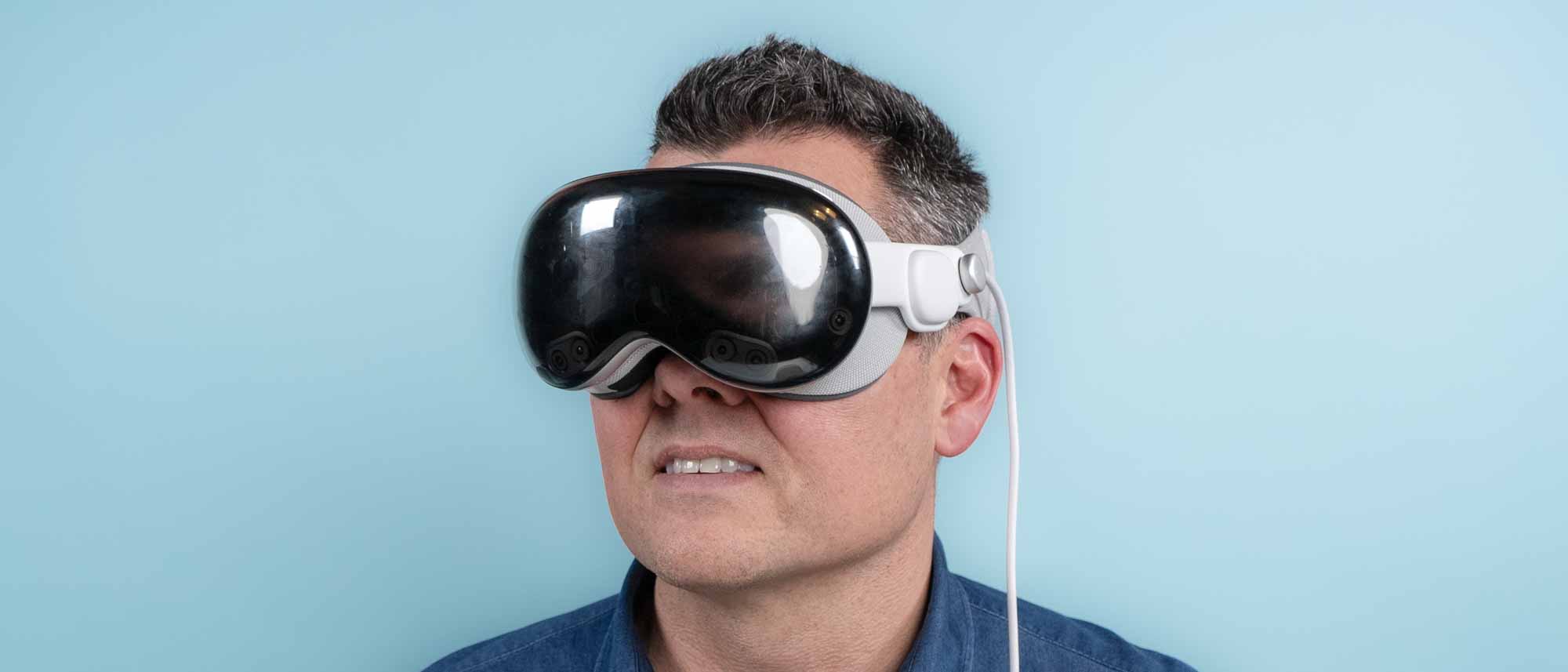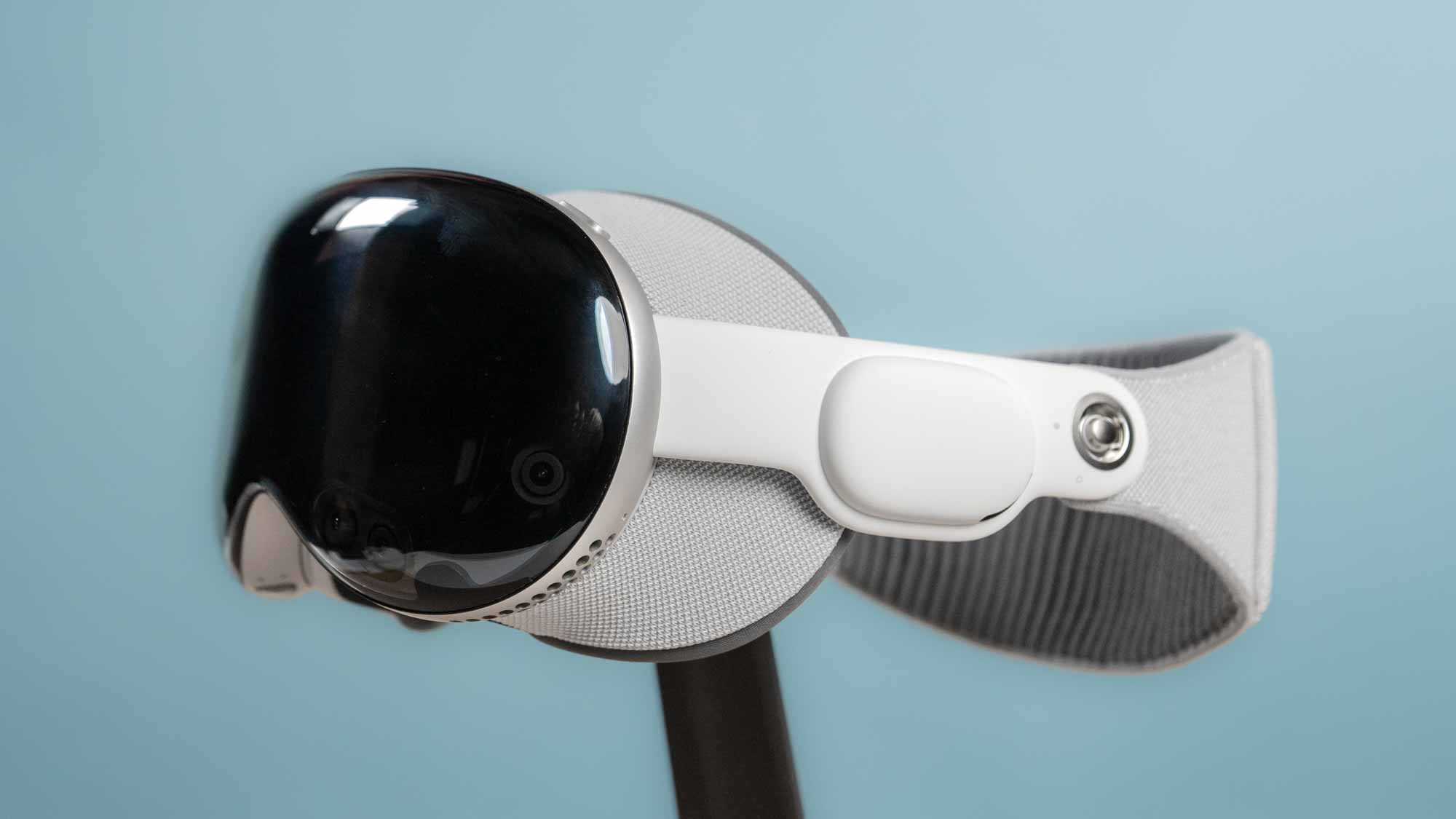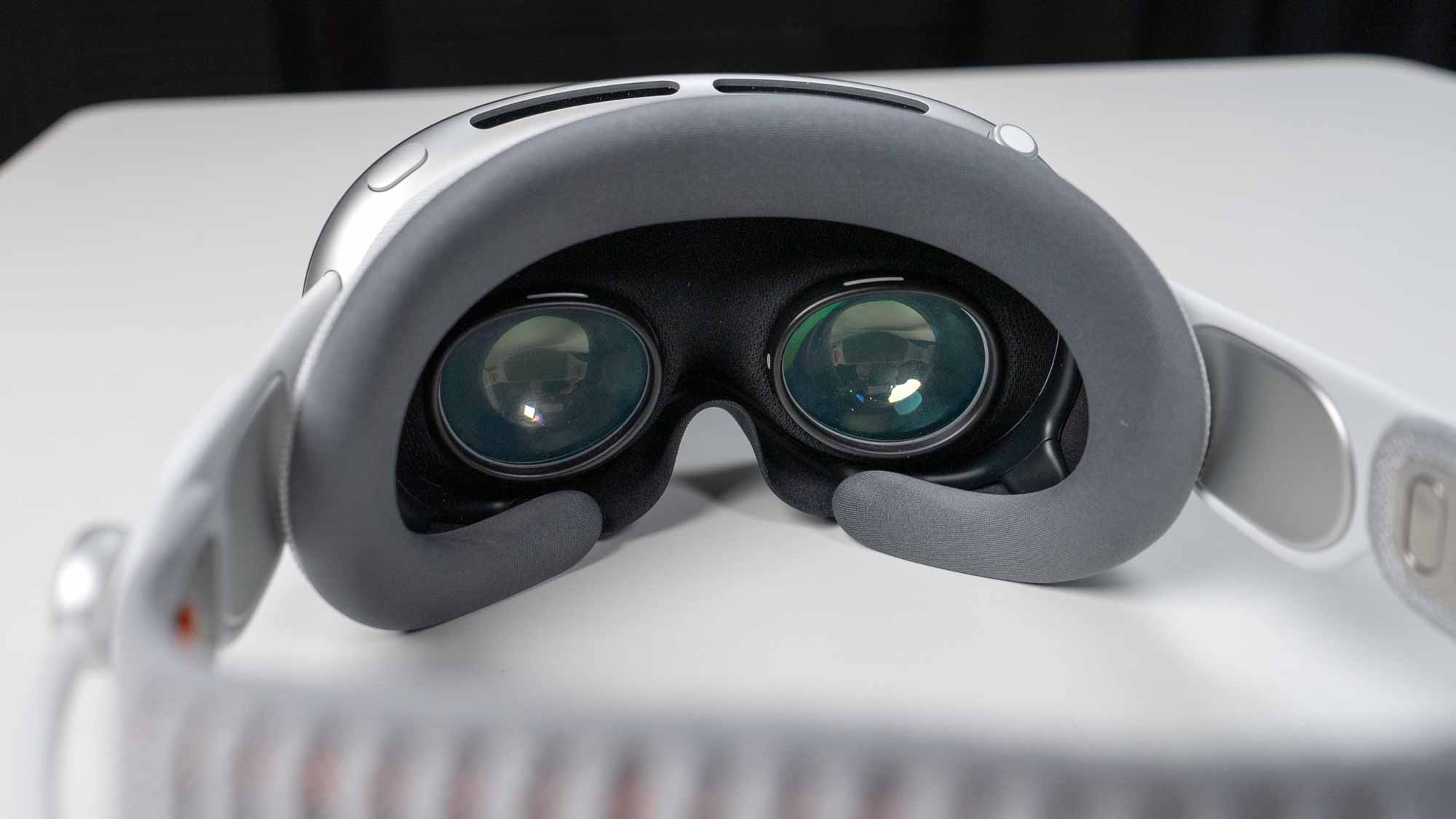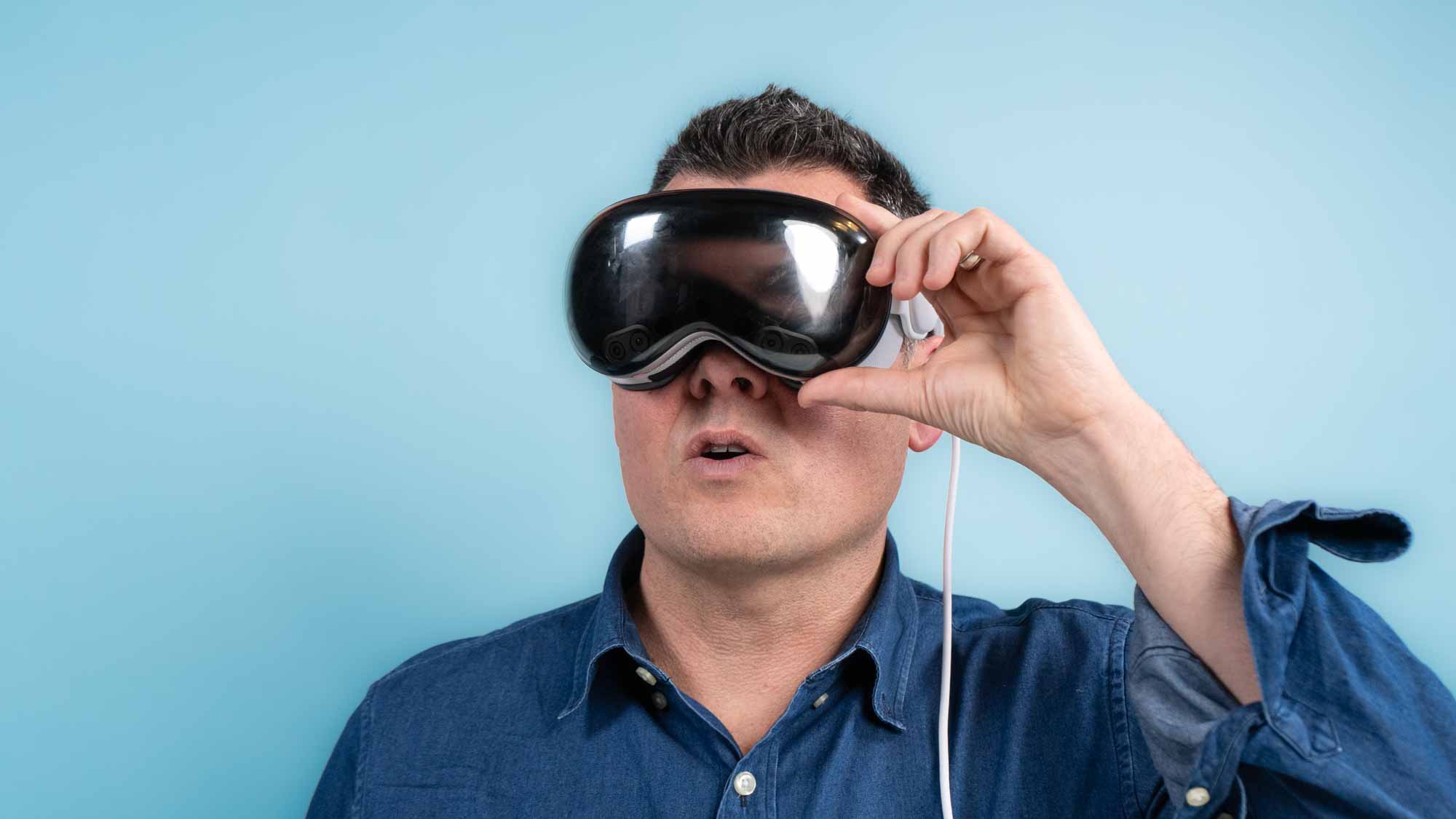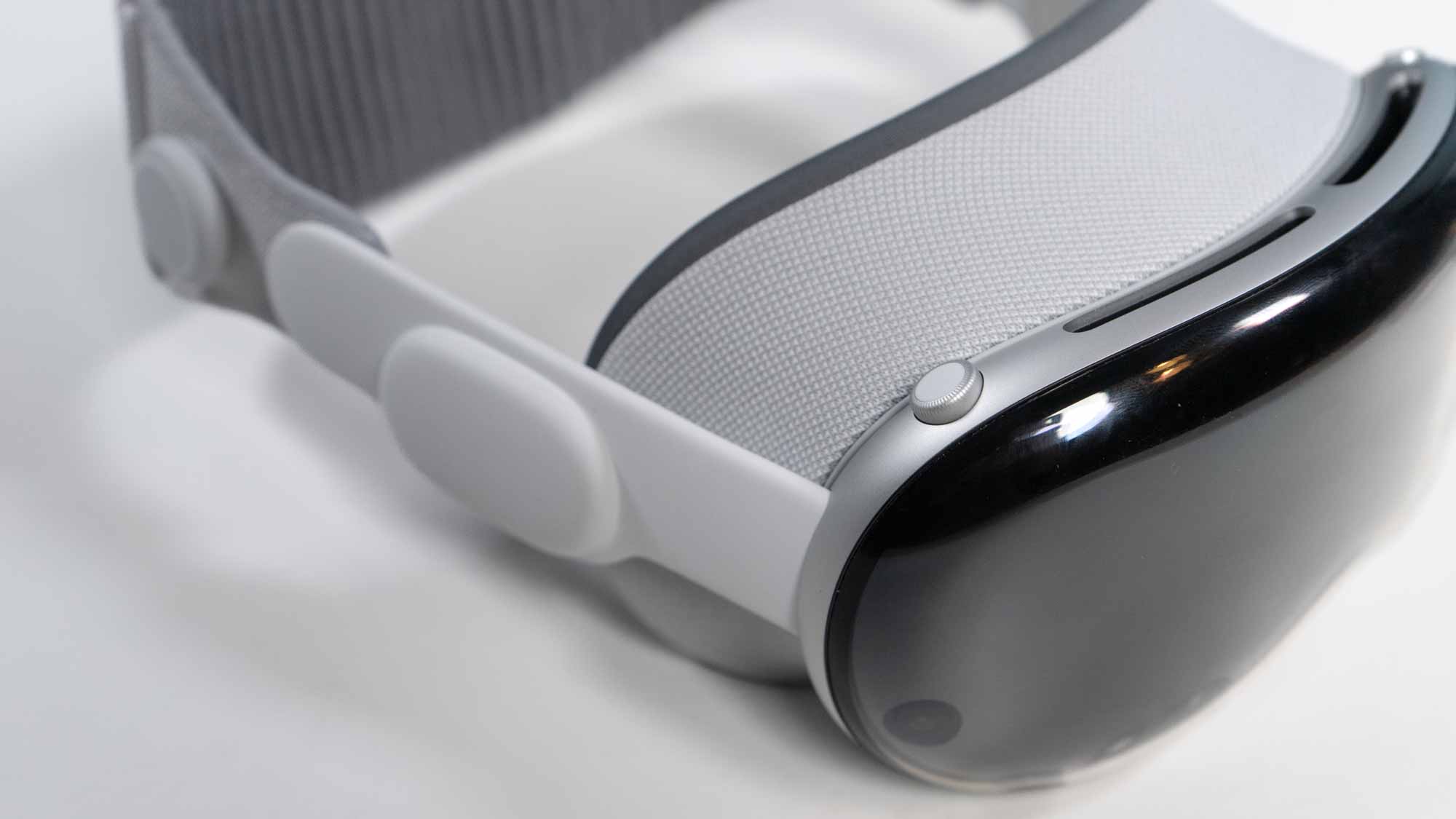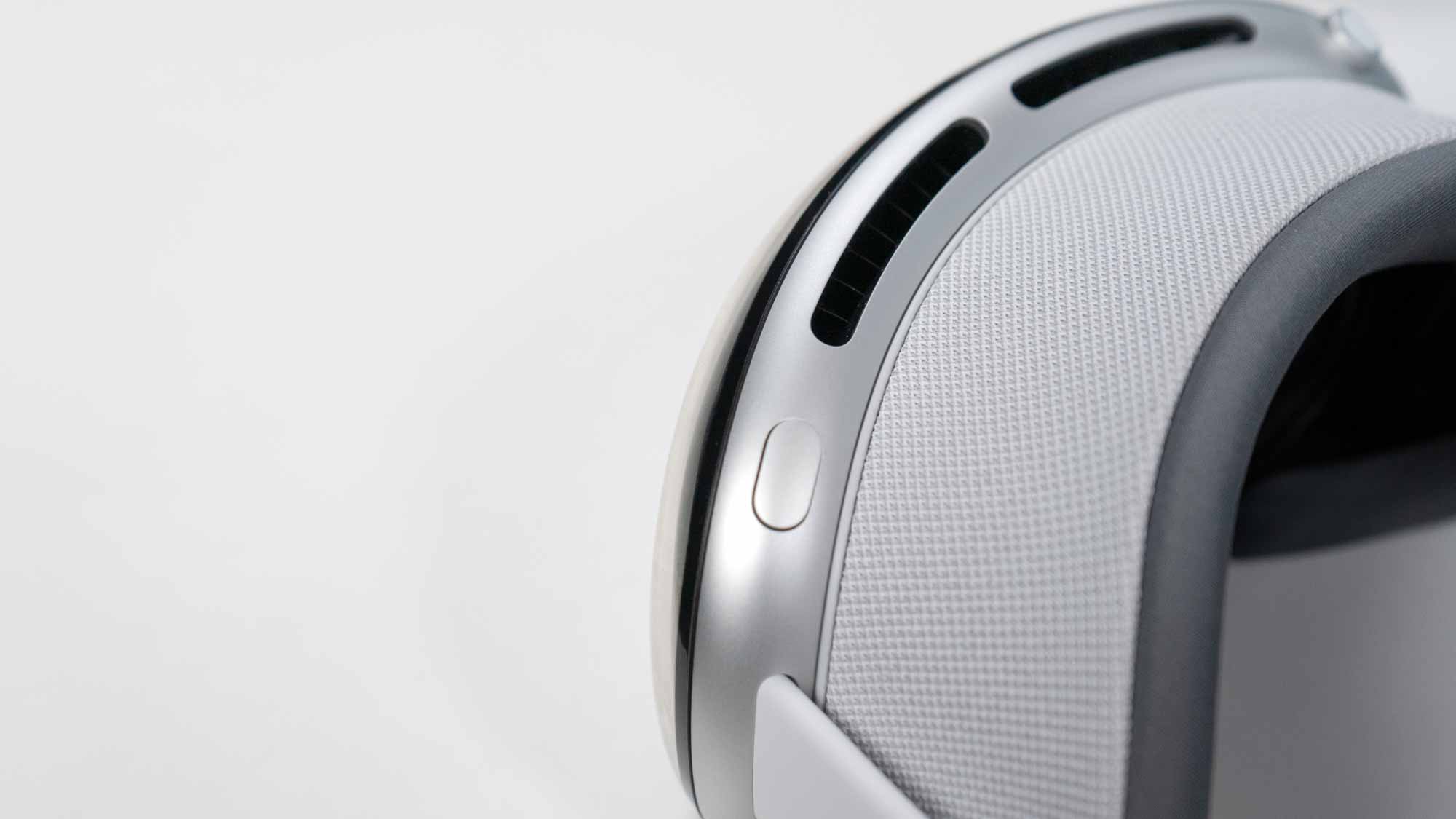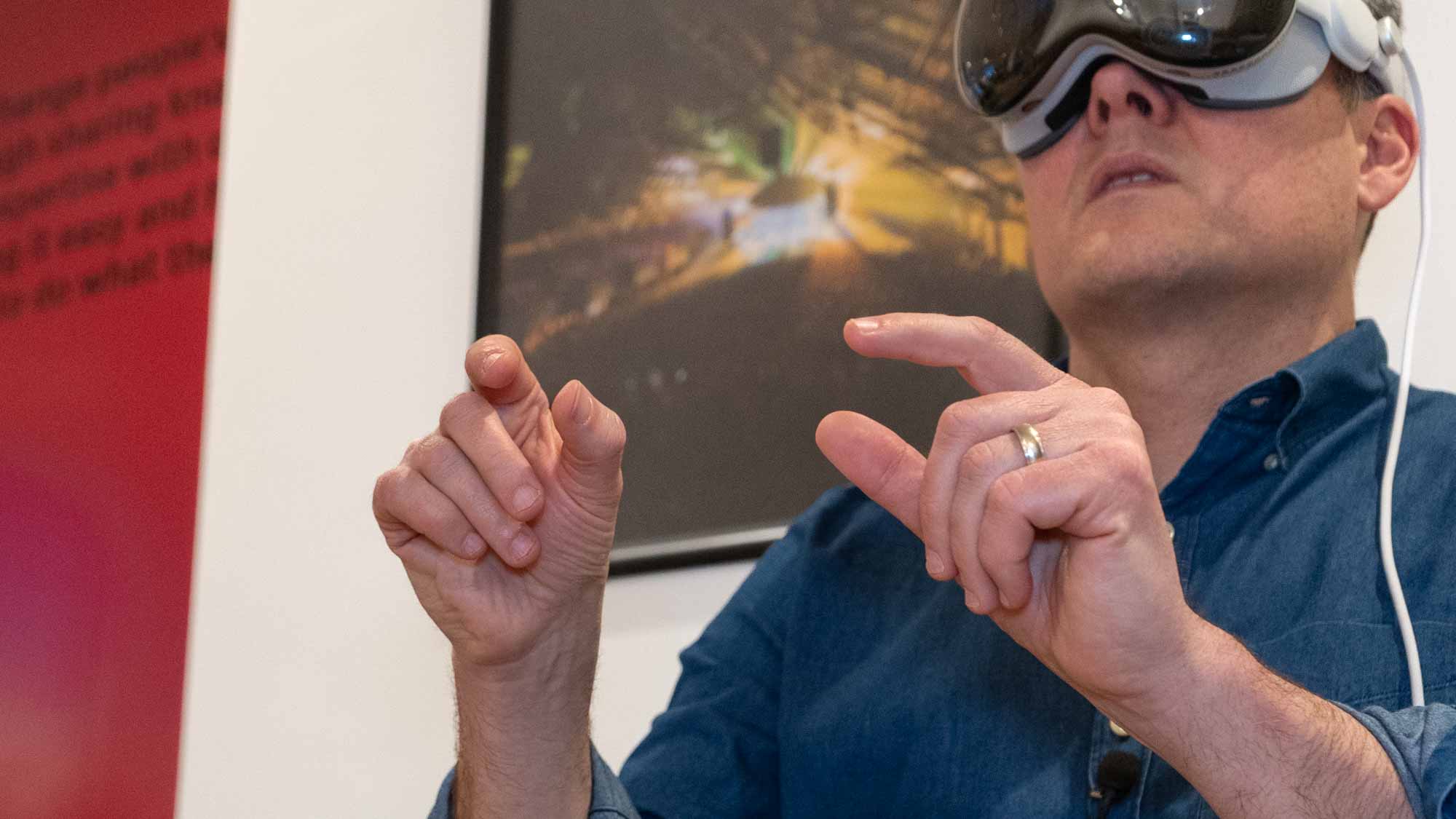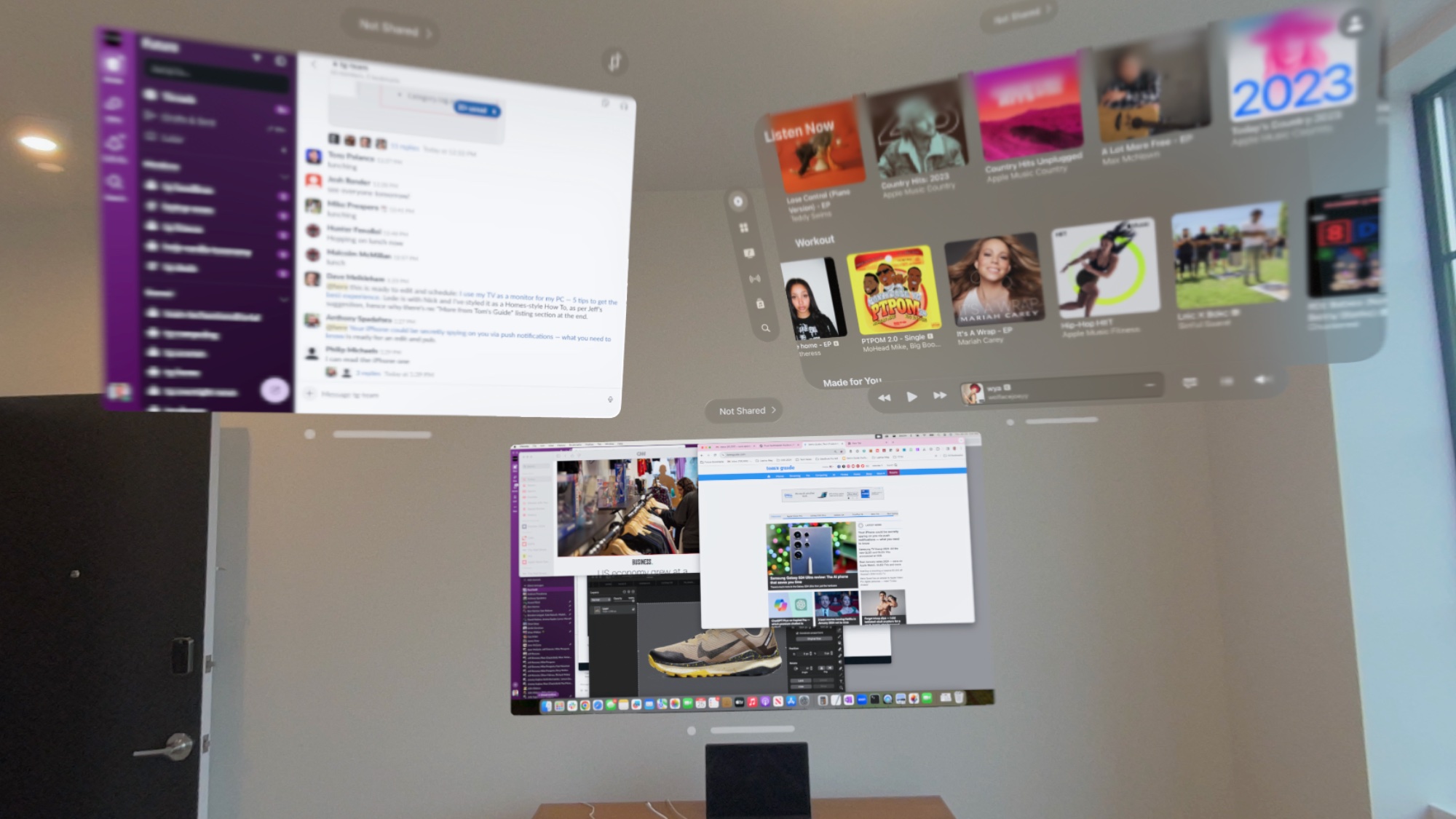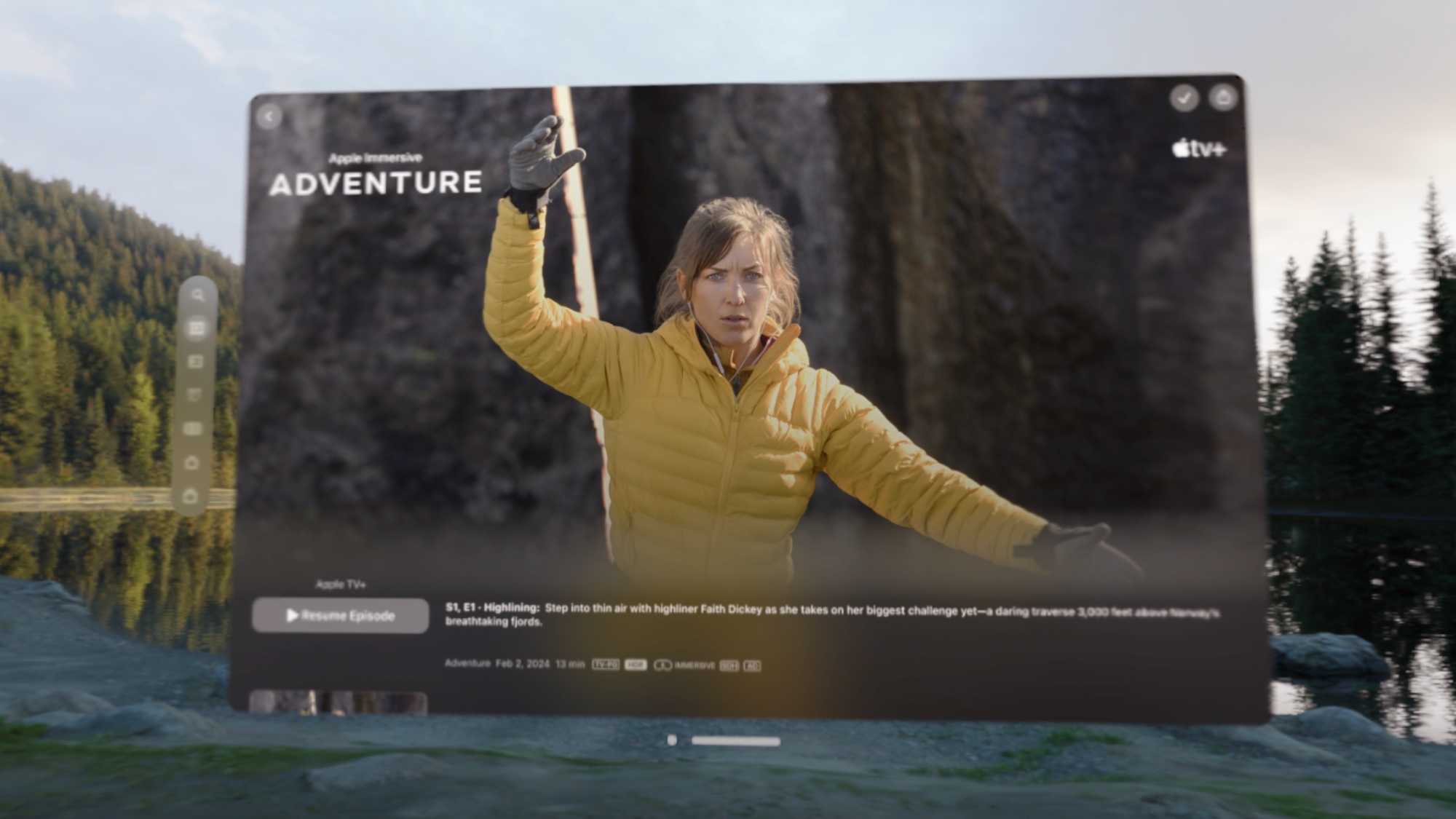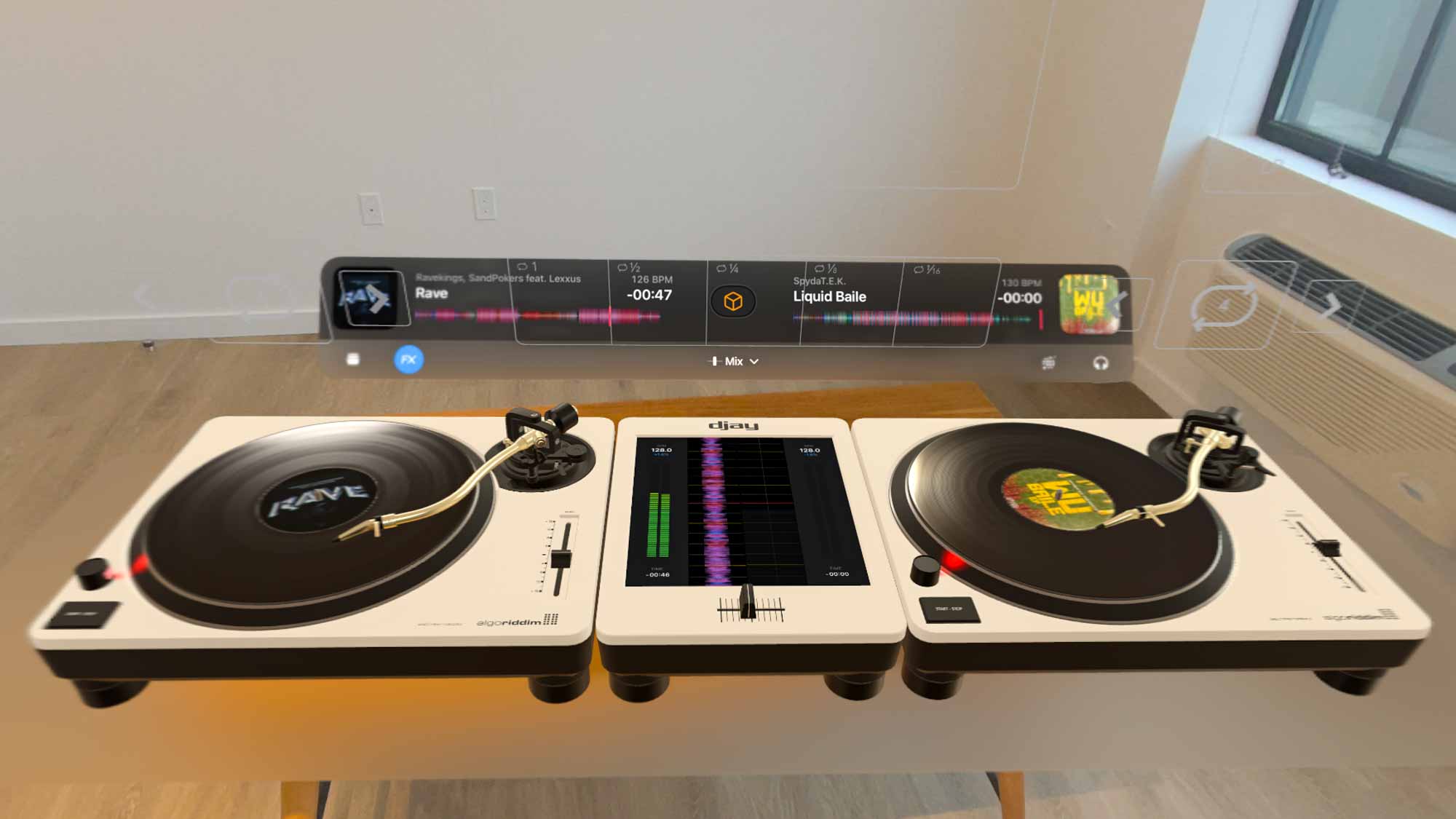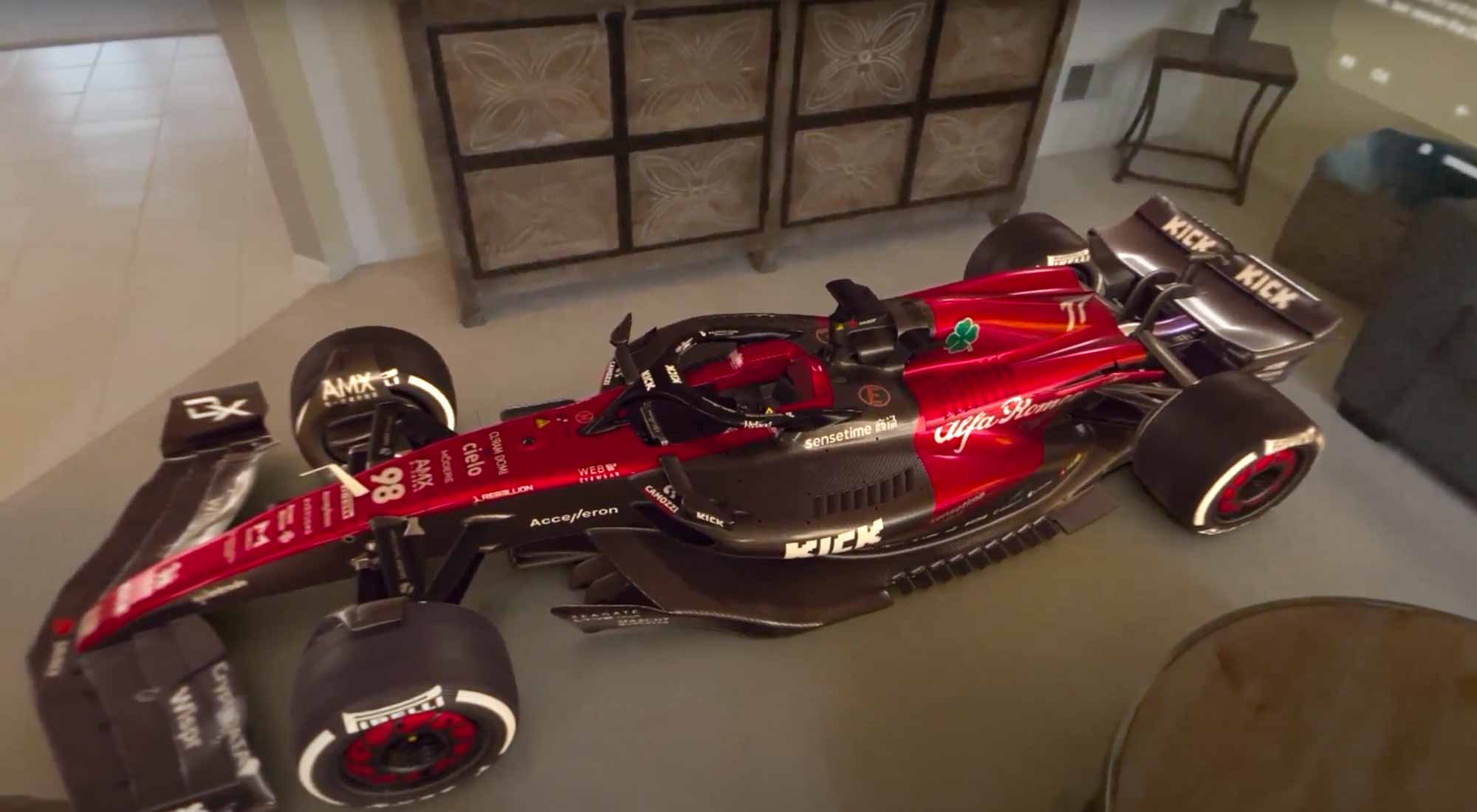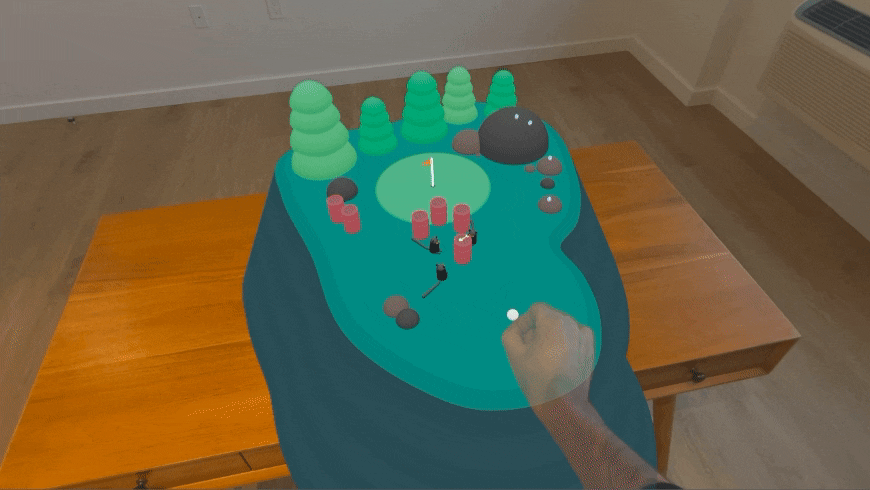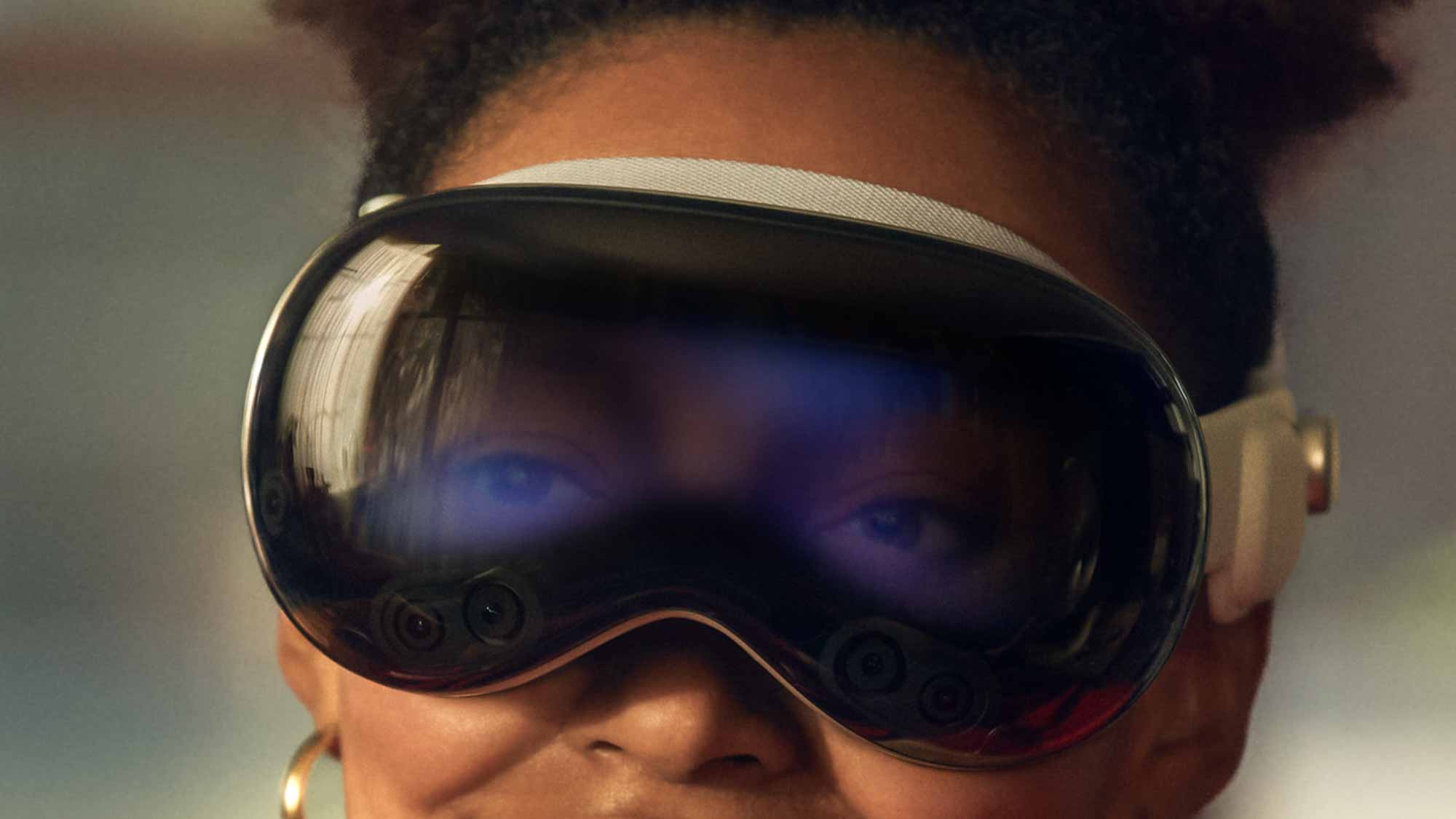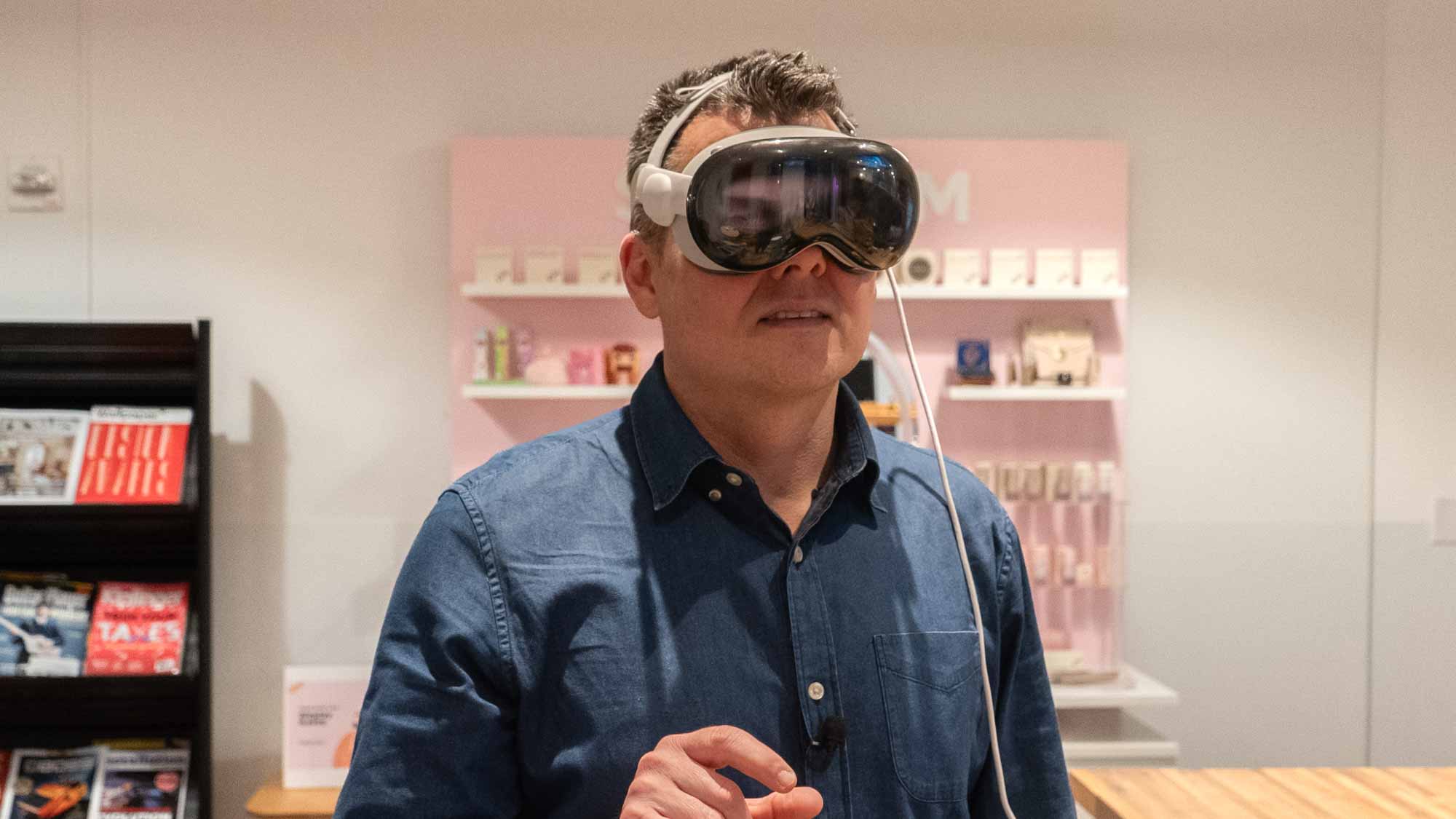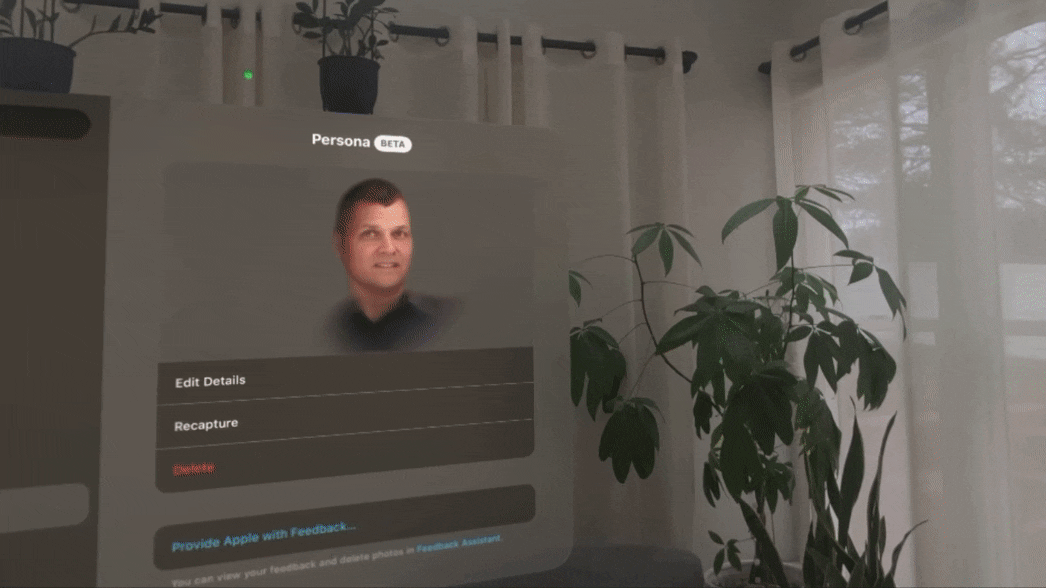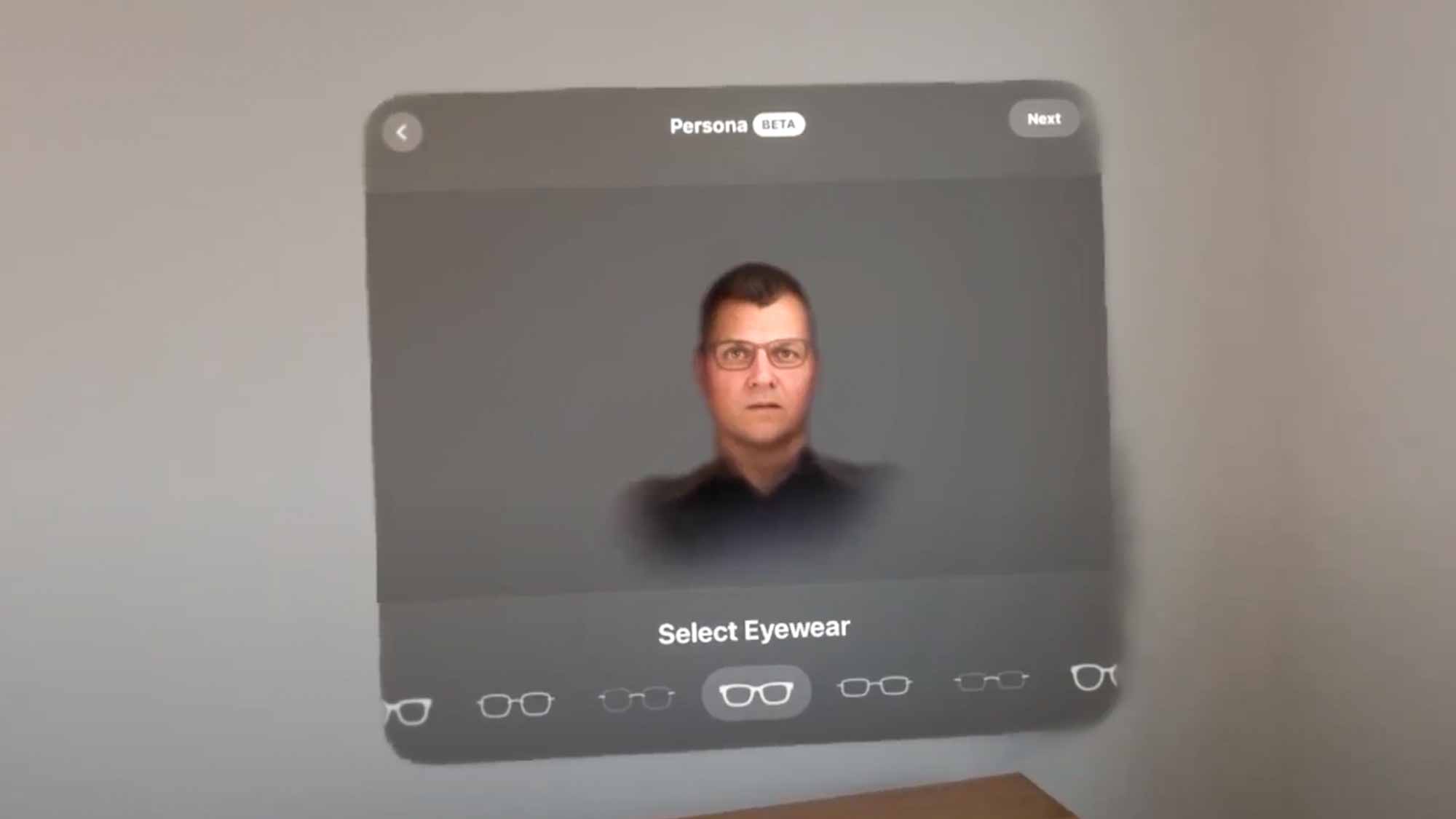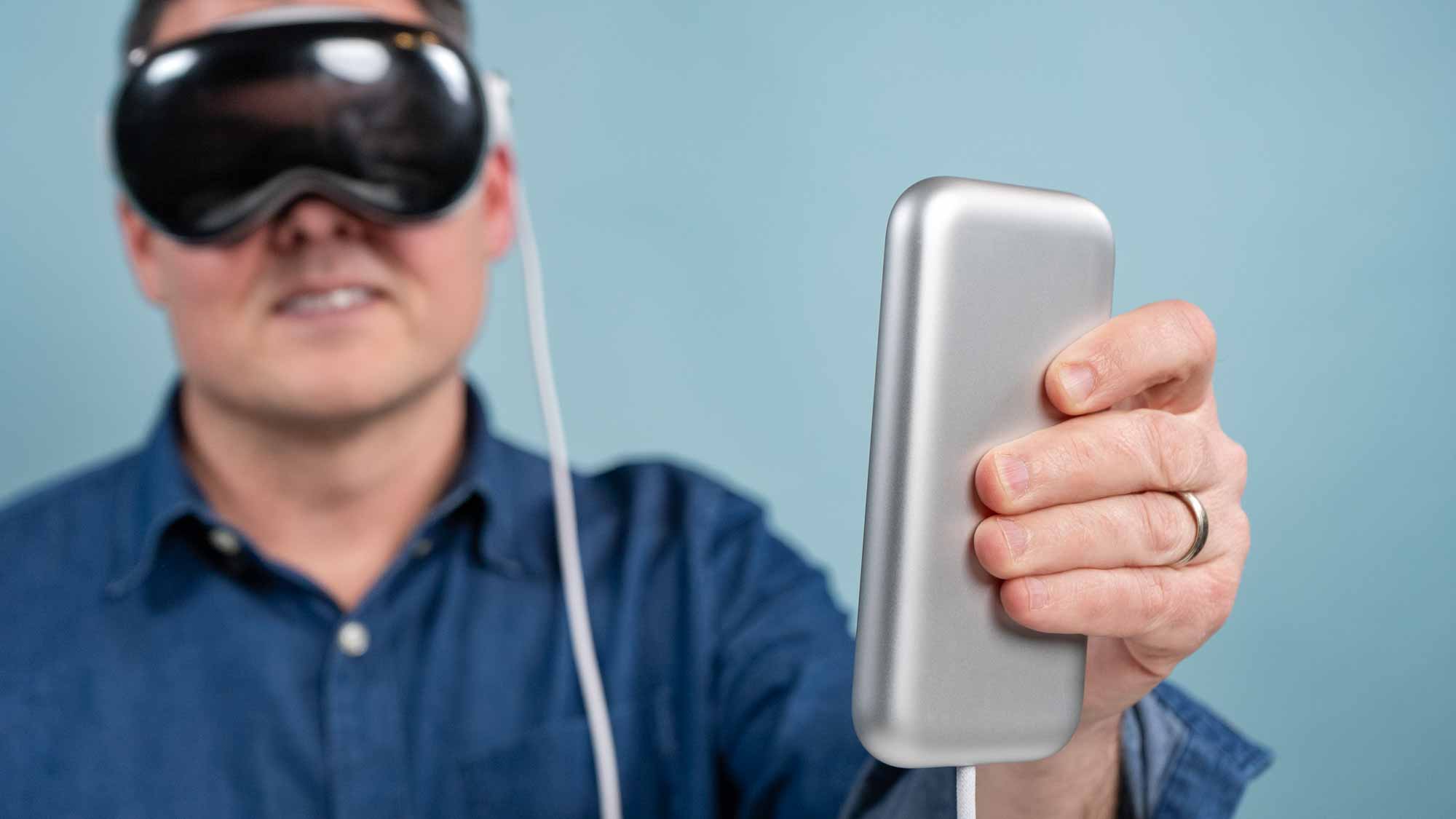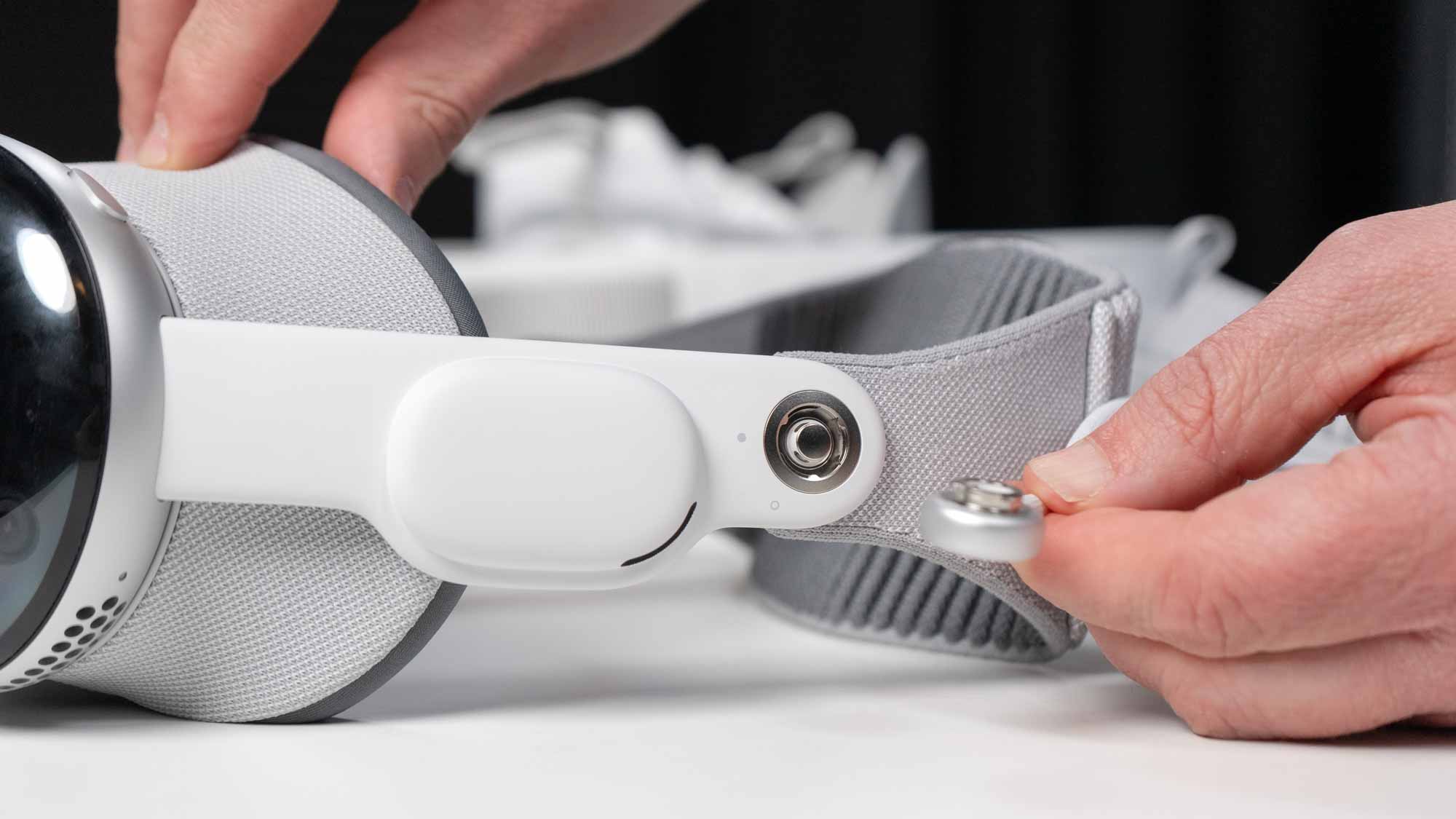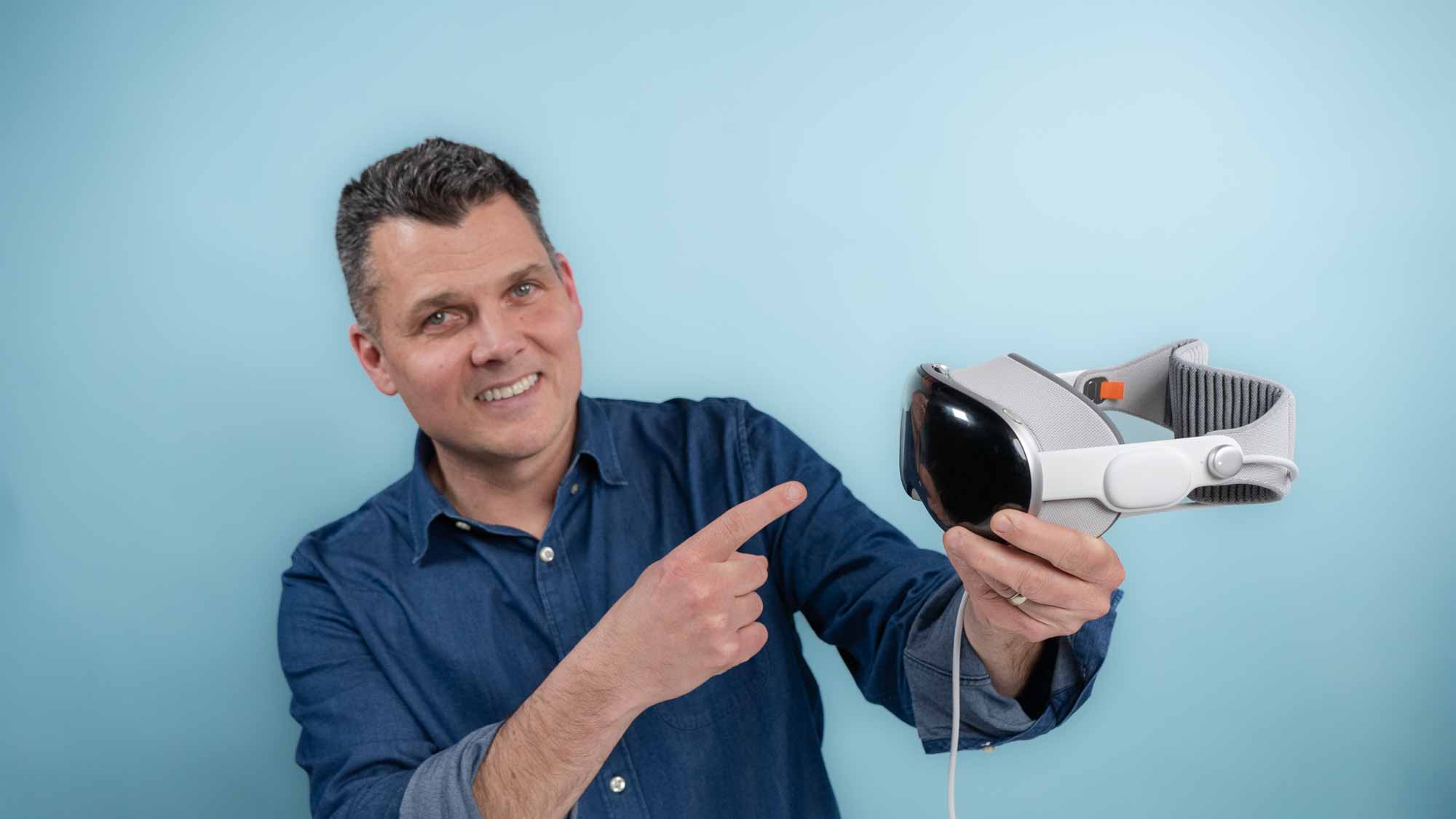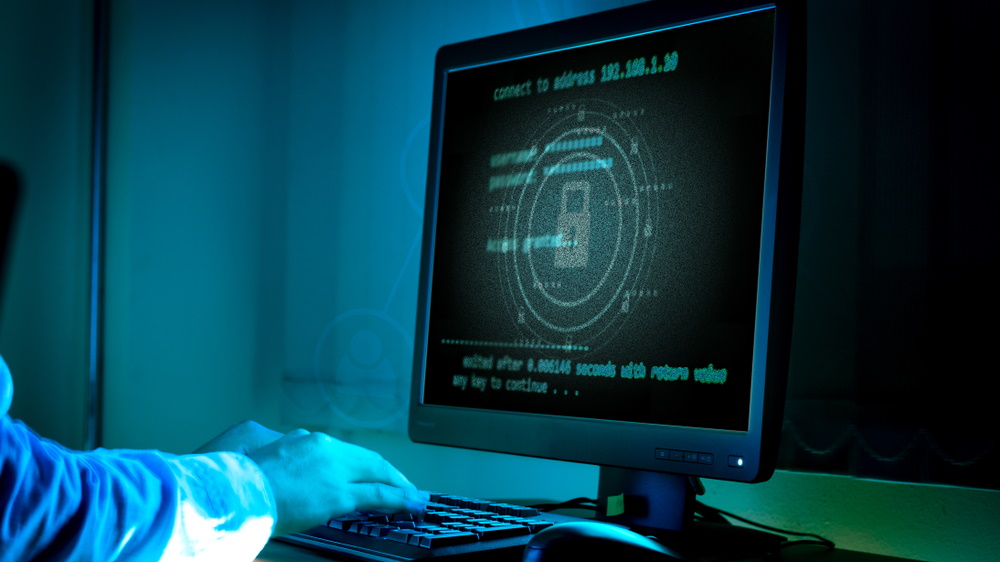Tom's Guide Verdict
The Apple Vision Pro is a truly amazing product that delivers futuristic eye- and hand-tracking interface along with breathtaking 3D video and truly impressive AR apps. It’s also a magical way to extend your Mac. But the high price and heavy weight hold this headset back, and there needs to be more killer apps.
Pros
- +
Amazing eye- and hand-tracking interface
- +
Jaw-dropping 3D movies and Apple Immersive Video
- +
Impressive Spatial video and photos
- +
Works magically with MacBooks
- +
Compelling AR apps and experiences
Cons
- -
Super expensive
- -
Heavy to wear for extended periods
- -
Tethered battery can be annoying
Why you can trust Tom's Guide
The Apple Vision Pro is an incredible piece of technology, but is it for you? This spatial computer boasts an eye and hand tracking interface that puts the competition to shame, and some of the AR and VR experiences are truly jaw-dropping.
Whether it's playing virtual DJ, spinning two records in front of me, or seeing a supersize display pop up in front of me by just looking at my MacBook, this is what Apple means when the company says it "just works."
I was left almost speechless when I viewed a 3D spatial video of my three dogs coming towards the camera. It’s so immersive you may get a bit emotional. Oh, and you can watch over 300 regular 3D movies in Apple TV+ that blow away your local theater.
But there’s some very big drawbacks that come with this revolution, including the fact that this headset feels pretty heavy after just 30 minutes of use. You also need to lug a battery around, which can be cumbersome. And then there's the $3,500 price.
Here's the pros and cons of the Vision Pro based on my testing.
Vision Pro review updates
- Feb 21: The Vision Pro is getting Apple Intelligence starting in April 2025 as part of the visionOS 2.4 update (Feb 21)
- Sept 16: 2024: Apple introduces visionOS 2 with new hand gestures for quickly getting to the Home View and accessing Control Center. (Sept 16 2024)
- April 2 2024: I tried the new Apple Immersive Video on the Vision Pro showing MLS highlights, and it's a very compelling example of what's possible with the platform with immersive 180-degree 3D video.
- Feb 7 2024: The Apple Vision Pro visionOS 1.1 beta brings "appearance updates" to your Persona, as well as the ability to reset the Vision Pro on the device itself instead of needing to send it back to Apple.
Apple Vision Pro review cheat sheet
- What is it? A spatial computing headset that combines augmented reality experiences and virtual reality
- Who is it for? People big on multitasking, enjoying 3D entertainment, capturing photos and videos and business travelers
- What does it cost? $3,499 plus more for additional storage and accessories
- What can you do with Apple Vision Pro? Supersize your Mac display by looking at it, use and pin multiple apps around your space, capture and view 3D photos and videos, watch 3D movies, experience AR apps, play games
- How long is the battery life? 2 to 2.5 hours
Apple Vision Pro review: Release date, price and accessories
The Apple Vision Pro is out now in several countries across the globe — starting at an eye-watering price of $3,499. The entry-level model comes with 256GB of storage, and it’s $3,699 for 512GB and $3,899 for 1TB.
Wear glasses? The ZEISS optical inserts for readers cost $99 and prescription lenses cost $149, though I do like how easily they magnetically attach to the Vision Pro. Apple Care+ will run you an additional $499, which gives you 2 years of unlimited repairs and damage protection.
Get instant access to breaking news, the hottest reviews, great deals and helpful tips.
In terms of accessories, there’s plenty of options, but the one I recommend most is the $199 travel case, which is big and bulky but will protect the Vision Pro when you’re flying or just going to and from the office. Other accessories include Belkin’s battery holder for $49.
Apple Vision Pro tech specs
Price | from $3,499 |
OS | VisionOS |
Chips | M2 and R1 |
Display | micro-OLED (23 million pixels, 90Hz, 96Hz, 100Hz) |
Storage | 256GB, 512GB, 1TB |
Camera | 6.5MP Stereoscopic 3D camera with spatial video and photo captures (18mm, f/2.0) |
Sensors | 2 main cameras, 6 world-facing tracking cameras, 4 eye-tracking cameras, TrueDepth camera, LiDAR scanner, 4 inertial measurement units, flicker sensor, ambient light sensor |
Authentication | OpticID (iris-based) |
Audio | Spatial audio pods with dynamic head tracking, 6-mic rray |
Wireless | Wi-Fi 6 and Bluetooth 5.3 |
Battery | 2 hours of general use, 2.5 hours video playback |
Weight | 21.2 - 22.9 ounces |
Apple Vision Pro review: What’s in the box?


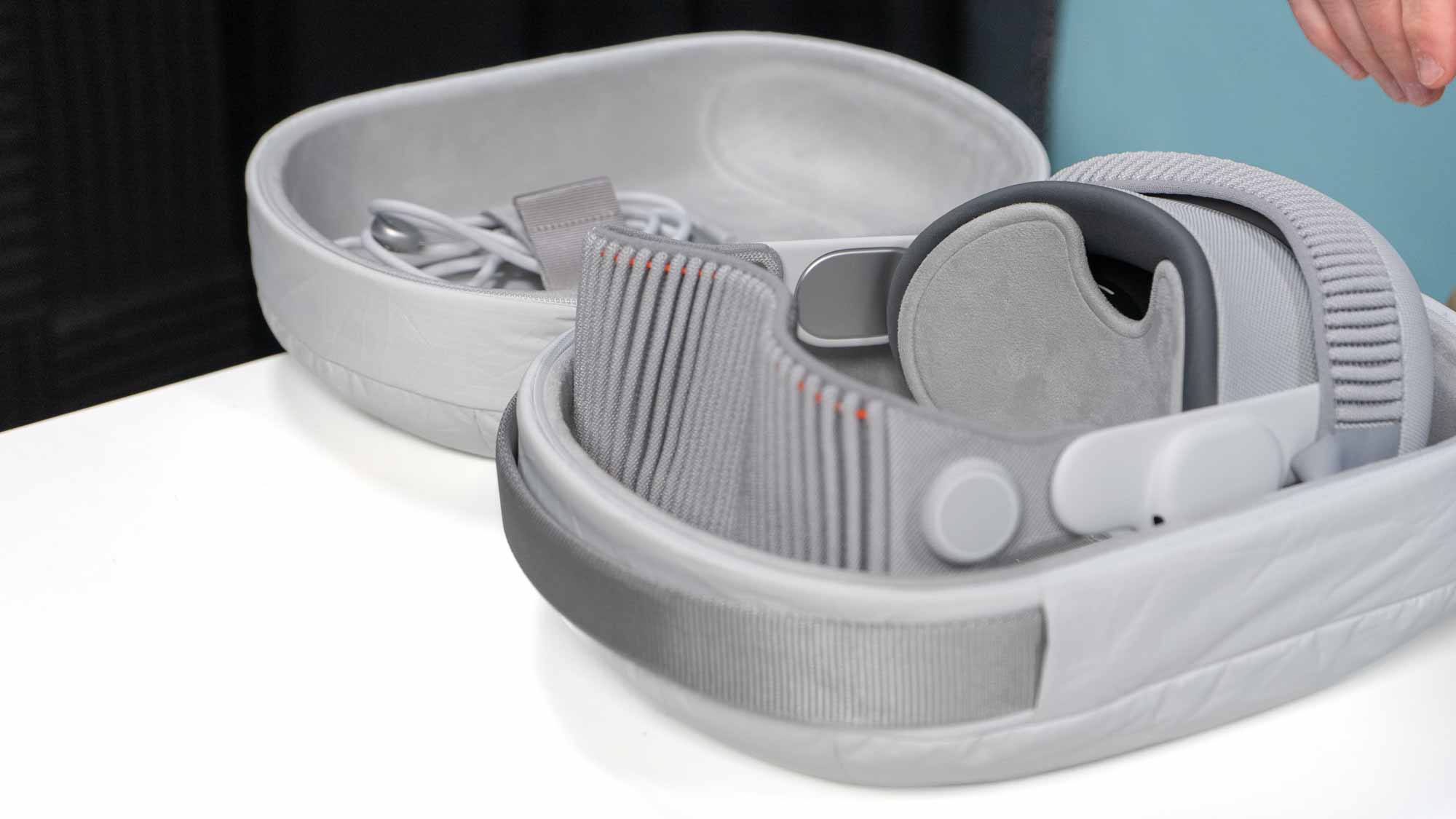

The Apple Vision Pro comes in a pretty big box, and there’s lots of stuff in it, including the headset itself, the Light Seal fitted for your face, the Light Seal Cushion and both the Solo Knit Band and Dual Loop Band.
There’s also the Apple Vision Pro battery, which remains tethered to the headset at all time, a second thicker Light Seal Cushion, a polishing cloth and a 30W USB-C power adapter.
Apple Vision Pro review: Design and comfort
The Apple Vision Pro is easily the sleekest headset yet, with a curved glass front panel and a modular design that makes it very customizable to the wearer. But it’s definitely not light. After 30 minutes I felt it weighing on my cheeks.
When ordering your Vision Pro, you’ll scan your face (similar to how you’d set up Face ID) to get a Light Seal that’s personalized, which prevents light from leaking into your view.
There are two bands that come with the Vision Pro. There’s the Solo Knit Band and the Dual Loop band. The former is stretchy and makes it really easy to take the Vision Pro on and off, and you can quickly tighten and loosen the fit with the built-in knob.
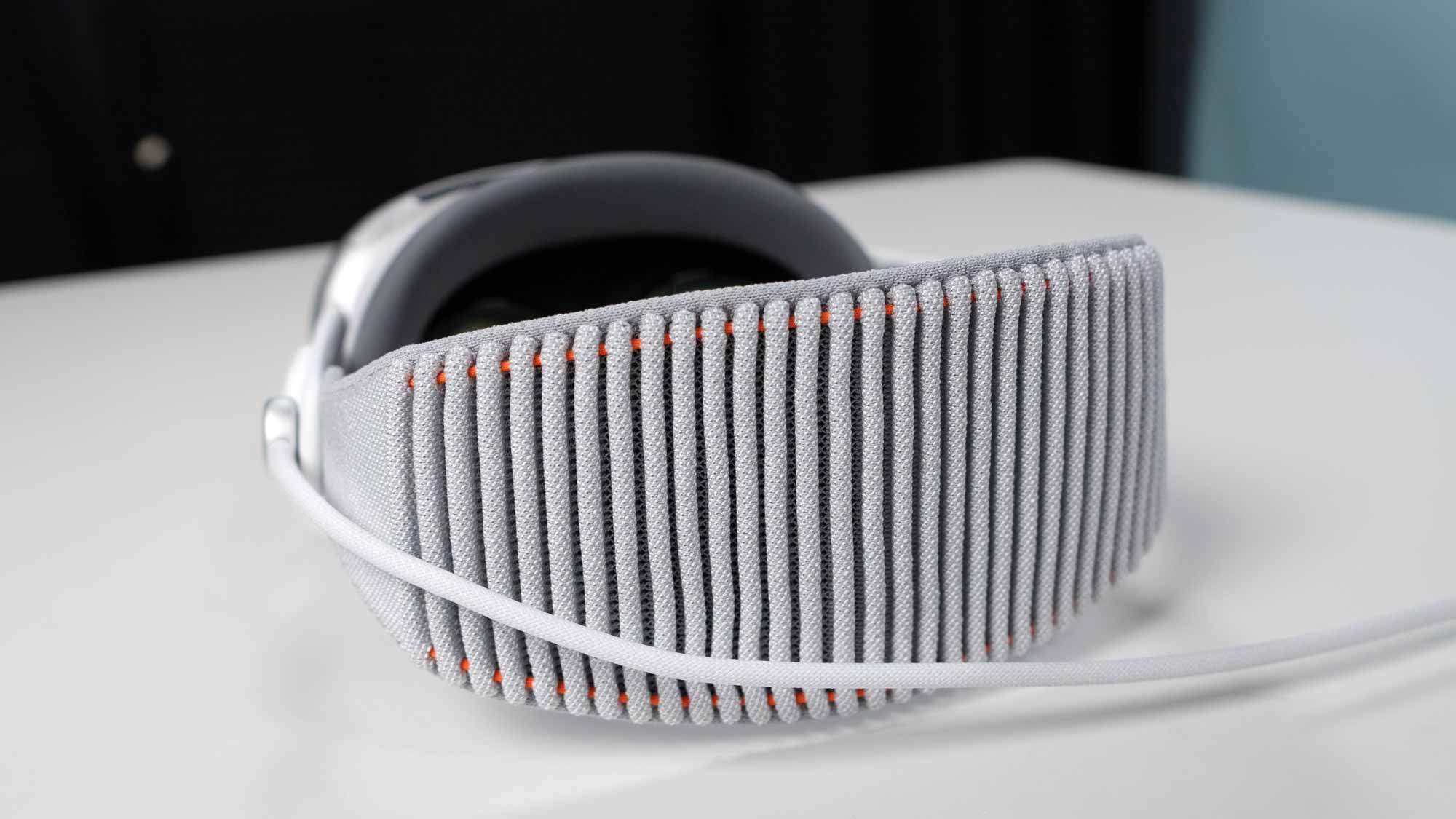
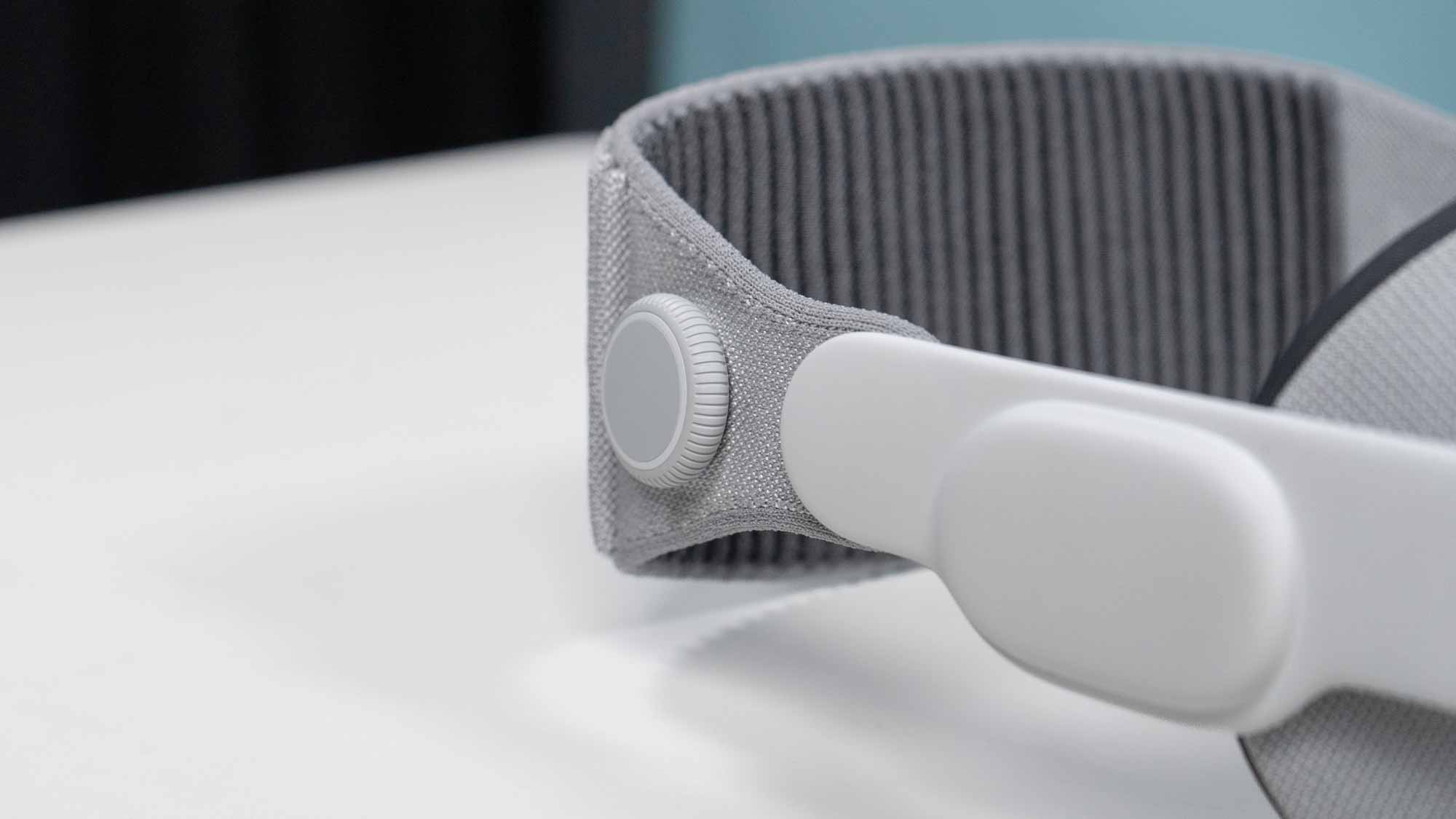
The Dual Loop Band provides more stability because there’s a strap that goes across the top of your head and the back. I find this one better for longer Vision Pro sessions as there’s more support for what’s a pretty weighty headset.
The Vision Pro weighs 1.3 to 1.4 pounds (depending on the Light Seal and head band configuration), which is more than an 11-inch iPad Pro on your head. For context, the Meta Quest 3 weighs 1.1 pounds and the Meta Quest Pro 1.6 pounds.
After wearing the Vision Pro on and off for several hours, I didn’t find it uncomfortable to wear, but I did feel like taking periodic breaks because of the heft. I also got some light red marks on my cheeks.
The right side of the Vision Pro houses the digital crown, which brings up the home screen from wherever you are. Turning the crown dials up the immersion on whatever Environment you’re watching (more on that later) and also controls the volume. The button on the left side of the headset is a top button, which you can use for capturing spatial photos and videos, as well as confirming purchases.
I really like how modular the Vision Pro design is. The Light Seal and and Light Seal Cushion attach magnetically to the device, and it’s easy to swap out the two band options by pulling on little orange tags. But I’d say the magnetic connection could be a bit stronger; a couple times when picking up the Vision Pro, the Light Seal detached. So you’re better off holding it by the metal and glass frame.
Apple Vision Pro review: Interface, hand and eye tracking
The Apple Vision Pro feels revolutionary because of how easy it is to operate. There’s no controllers to deal with. You just use your eyes to look at the element you want to select and then tap your thumb and index finger together to “click.”
While setting up the Vision Pro I immediately got accustomed to the input because you’re walked through a calibration process that involves following a dot around the screen and selecting it. Then you’re greeted with a home screen of iOS-like icons that float in front of your view of the room you’re in.
Vision OS starts with your real-world view as the baseline because the Vision Pro wants to bring digital content to your environment instead of taking it over. And the video pass-through is very life-like, as the dedicated R1 chip is fast enough to stream images to the Vision Pro’s microOLED displays within 12 milliseconds — that’s 8x faster than you blink.
I had no problem walking from room to room or using my iPhone with the Vision Pro on, though the frame rate of my iPhone 14 Pro Max was a tad sluggish.
As you stare around the home screen view and move your eyes from icon to icon, they light up ready to be selected. This is immensely satisfying, relaxing and easy to do, because the Vision Pro has downward-facing cameras that can track your hands in your lap.
The eye tracking is so good it’s also used to authenticate you via OpticID, which measures your pupils for security. So think Face ID for your eyes. When it works, it works well, but a couple of times during my testing it didn’t work, and sometimes you need to enter your PIN code via a floating keypad to enable OpticID, which I found annoying.
So what about gestures? You can easily scroll from left to right and up to down by pinching your fingers together and drag the direction you want to move. Zooming in on a photo or webpage is as easy as pinching your fingers together with both hands and spreading them apart. It’s Minority Report-cool.
In case you're wondering, I tried the Vision Pro in complete darkness, and you'll get warning that says you won't see your hands. But the hand- and eye-tracking interface still works, so you can definitely watch movies in bed.
Apple Vision Pro review: Spatial computing and work
So what can you do with the Vision Pro? For starters, it’s a multitasking champ, thanks to the built-in M2 chip that runs the OS. For example, I launched Safari in the center of my space, then I turned to my left and asked Siri to launch Slack and the app appeared. Then I turned to the right of Safari and opened Apple Music so I could have that playing in the background.
Even better, it’s easy to move apps around in your virtual space by selecting the bar beneath the app, and you can resize them by staring at the bottom right corner and dragging it with your finger. If you want to close an app, you can either stare at the X beneath the window or simply ask Siri to close all apps. You can also go back home at any time by long pressing the digital crown.
At any time you can pull up the Control Center by simply looking up and clicking on the floating downward-facing arrow. From this menu you can change Environments, turn on Guest mode, access Wi-Fi and Bluetooth, start screen recording and more.
One of the options in Control Center is the ability to connect with your Mac, but you can also bring your Mac desktop into the Vision Pro just by looking at it. I saw a Connect button floating above my MacBook Pro 14-inch, pinched my fingers together and saw my laptop’s screen go blank, popping up on the wall in front of me instead.
You don’t get multiple desktop views, but you do get a crystal clear 4K display that renders text crisply, and you can make that canvas positively huge so it dwarfs most of the best monitors. Your keyboard and mouse still work as they normally would with no latency. You can even use your keyboard in Vision Pro apps if you want. Yes, only Apple could do this, and I could see myself taking the Vision Pro on business trips and using it back at the hotel.
Apple Vision Pro review: Environments
One of the unique aspects of the Apple Vision Pro is your choice of multiple Environments. Think of them as 3D desktops on steroids. There are several options available, ranging from Yosemite and Haleakalā to the Moon.
I pulled up Mount Hood and was floored by the level of realism, with detailed sand and rocks beneath my feet, rippling water in front of me and a towering mountain in the background. And you get to decide how immersive the Environment is by turning the digital crown clockwise (more) or counterclockwise (less).
There are also Environments that are unique to specific apps. For instance, Apple TV+ has its own cinema Environment for watching movies that makes it feel like you’re watching a 100-foot screen, while Disney+ lets you use The Avengers Tower as your backdrop — complete with a collection of Iron Man suits — before playing a show or movie.
Apple Vision Pro review: Typing and voice input
The Apple Vision Pro lets you type on a floating keyboard to enter text, but it’s not very satisfying. For one, there’s no tactile feedback, even though you hear clicks as you type. And you can’t type very quickly; it’s more a peck-peck-peck scenario with one or two hands.
I do like that you can enter text with your voice. For example, if you’re in Safari and you just stare at the microphone icon in the address bar and speak “tomsguide.com” it will automatically take you to that website.
Also keep in mind that you can easily pair a Bluetooth keyboard to the Apple Vision Pro for easier and faster text input.
Apple Vision Pro review: 3D movies, Immersive Video and audio
The Apple Vision Pro on day one is already a first-class entertainment device, and it will make even the biggest skeptic a believer in 3D movies.
There are hundreds of 3D movies available in Apple TV+, and I couldn’t believe how good “Man of Steel” looked through the Vision Pro. As Superman took off for the first time, it was like he flew right over my shoulder.
The more recent “The Super Mario Bros.” movie was even more immersive, with the characters popping off the screen as Mario flew around in his raccoon suit while being chased by an oversized bomb.
This is a good time to mention that the sound from the Apple Vision Pro is surprisingly good. There are two audio pods built into the strap positioned close to your ears, and they deliver rich and balanced Spatial Audio. For example, I could hear Mario coming from the left side of the screen and Princess Peach from the right as they spoke.
When listening to SZA’s “Kill Bill” through Apple Music, the audio pods had plenty of punch in the drums and the vocals were crystal clear. However, it’s worth noting that the audio will leak out from the Vision Pro when listening so if you want to keep things private you should wear AirPods. The AirPods Pro 2 with USB-C is your best bet because they support lossless audio.
If you want to take entertainment to the next level, there’s Immersive Video, a new format that delivers a 3D experience via 8K recordings with a 180-degree field of view. For example, I nearly lost my breath when I watched a female highliner attempt to essentially walk a tightrope between two mountains 3,000 feet above the Earth in Norway.
As she narrated her thought process, I was mesmerized by the surrounding landscape, veins popping out of her feet as she walked barefoot across the chasm and the intensity in her blue eyes. In another Immersive Video starring Alicia Keys, I felt like I was right in the studio with her as she rehearsed, and I could see her backup singers as I peered over to the right and the instruments and speakers on the left.
Apple has shown other examples of how Immersive Video could come to life, such as through a goalie’s perspective during a soccer match, and I could see this as a game changing format for watching sporting events, especially since Apple has rights to broadcast MLB and MLS games. You could essentially sit anywhere you want to see the action.
I watched a 5-minute highlight reel of the MLS Championship Cup through the Vision Pro, and I felt like I had a front-row seat to the action. Actually, it's even better as my view floated above the goal as the ball flew towards the net.
Apple Vision Pro review: Photos and Spatial Video
One of the biggest selling points of the Apple Vision Pro is spatial photos and videos. You can take 3D stills and videos using the headset itself or capture spatial videos with the iPhone 15 Pro and iPhone 15 Pro Max (not photos).
I took a spatial video of my three dogs at home in our sunroom and each pup looked incredibly life-like as they got closer to the camera and my golden retriever showed me his Christmas stocking chew toy. You’ll get the best results if your subjects are moving and you stay fairly still, as I lost the immersive effect when I turned my head to follow them around.
To take a spatial video with the Vision Pro, you use the top button on the left side of the headset, but I felt pretty geeky while doing it. You will be made fun of by family and friends — guaranteed.
The Vision Pro also brings panoramic photos to life in a new way by wrapping them around you. So it’s as if you’re standing in the center of the frame. For example, I took a panorama of the Manhattan skyline from the balcony of a Bronx apartment building, and I was completely immersed in the photo, from the Coca-Cola truck on the left side of the frame to the bridge in the center and the tall skyscrapers peaking through the cloudy background.
If you own a Vision Pro, you’ll be inspired to take more panoramic photos. But even regular photos take on new life in the Vision Pro as you scroll through your gallery. I had a blast reliving pics I took on a trip with my son to see the Buffalo Bills game and Niagara falls. His smile at the game is priceless when I see it this big.
Apple Vision Pro review: Apps
The Apple Vision Pro can run over a million compatible iPhone and iPad apps at launch, which is nice, but I was more interested in testing the truly native Vision Pro apps. While the selection is fairly modest for now — Apple says there's 600 native Vision Pro apps so far — some of the experiences are mind-blowing. Other Vision Pro apps seem more like tech demos than full-blown apps.
The most impressive Vision Pro app I tried is djay, which puts you right in front of a mixer and turntables. I had no idea what I was doing but was still blown away with the realism of the table itself and the fact that I could interact with all the buttons, sliders and needles as if they were there. And there’s wild transparent boxes that you can put your hand through to make special effects. This is nuts.
SkyGuide is a very immersive app that puts you inside a planetarium wherever you are. As you look up at the night sky you can make out constellations and also use a laser pointer to draw in the sky. This is an app that made my teenage son go “woah,” so you know it’s good.
Other notable Vision Pro apps I tried include JigSpace, which lets you place 3D animations and models right in front of you, from an airplane engine to a Formula One race car, complete with realistic light reflections. And Voyager by ForeFlight makes you feel like an air traffic controller as you watch real-time 3D visuals of planes taking off and landing at various airports. Other apps were less impressive, such as Carrot Weather.
While it’s a short experience, the Encounter Dinosaurs app from Apple is a heart-stopping example of what’s possible with the Vision Pro. A butterfly literally flies and lands on top of your finger before a giant dinosaur enters the frame, sees that you’re looking at it and then jumps out of the screen so that his nose is inches from your face. It’s scary and thrilling.
It’s very noteworthy what apps are not here at launch for the Vision Pro, such as Netflix and YouTube. There’s not even iPad-compatible apps right now. When asked about snubbing the Vision Pro, Netflix’s CEO said that they’re in discussions with Apple but right now the device is “so subscale that it’s not particularly relevant.” Yikes.
Other developers are stepping up with impressive apps, though. TikTok is a streamlined, simple and very immersive app. There's a video player front and center and you can easily pull up comments, though I'd like to see spatial video support added.
For more info, check out my roundups of the best Apple Vision Pro apps so far.
Apple Vision Pro review: Games
Does the Vision Pro have killer games? Not that I can see, but there’s a pretty good mix of native games you can control with your hands and iPad apps you can supersize and play with a controller. Jetpack Joyride is easy to control. You just press your fingers together to boost the jetpack and move your hand to fly the character.
Synthriders is way more ambitious, which is also available on Meta Quest. You use your hands to touch colorful floating balls and beams of light coming at you to the beat of a song, and you can also dodge and duck obstacles. It’s a fantastic example of mixed reality done right.
I also played What the Golf?, which is a casual mini golf game where you can place the virtual course anywhere in the room and start putting. To hit the ball you put your fingers around it and pull back and you’ll see an arrow that you can then direct with your hand. Let it go and you’ll see your ball head towards the pin. Trying to select the ball didn’t always work the first time, but I loved that I could walk around the course to get a different vantage point and the view never stuttered.
In addition, I tried a few iPad games with a connected controller on the Vision Pro, such as SonicDreamTeam. The action and graphics were smooth, but it’s essentially a 2D experience on a very large screen. You can also play Mac games through the Vision Pro, such as Resident Evil Village — if you have a powerful enough MacBook.
Personally, I’d like to see more native Vision Pro games that take advantage of your hands, such as fighting games and first-person shooters. For example, the Meta Quest 3 has a great sword fighting game called Broken Edge. Gaming is one area where Apple needs to catch up.
Apple Vision Pro review: EyeSight and Persona
Apple doesn’t want people to be closed off from the rest of the world while using the Vision Pro, so they’ve developed a few technologies to keep you at least somewhat connected.
The first innovation is EyeSight, which allows others to see a digital version of your eyes when they try to engage you while you’re wearing Vision Pro. So while you’re watching content and they walk into the room they might see a shimmer of light on the front display, but as they get closer and start to chat with you you’ll see the person break through into your view and they’ll see your eyes. It’s a subtle effect and a bit creepy looking, but it’s effective. Still, there’s no substitute for, you know, briefly taking off the headset.
The much more controversial feature is Persona, which is in beta and on the surface feels very metavers-y and un-Apple. But it started to grow on me (a little) once I started making FaceTime calls with it.
Persona is a 3D avatar of you that you create by scanning your face with the front cameras of the Vision Pro. You’ll be guided through the process step by step, which includes holding the headset in front of you, turning your face side to side and up and down, as well as smiling, raising your eyebrows and closing your eyes.
From there, the Vision Pro builds your Persona in less than a minute, and the result is impressive from a technical standpoint but also quite Uncanny Valley and conjures images of Madden or NBA 2K. It’s like me, but not quite me.
Also, I like to think I’m not too vain, but the Vision Pro managed to amplify the wrinkles on my forehead. In fact, my wife said my Persona looked like I was put through an aging filter. The good news is that if you don’t like how you look you can always recapture your Persona. You can also tweak your Persona by adjusting the color tone of your skin and the brightness, and you can choose from multiple Portrait-like effects. Contour, for example, is the most flattering.
You can also accessorize your Persona using digital glasses, but that’s about it. You can’t add things like jewelry or different clothes, etc. I’d like to see more customization options. And I wouldn't' mind if Apple took longer to process your Persona and also scanned (with your permission) some of your selfies to get the best possible result.
As part of visionOS 1.1, Apple is offering appearance updates for the Persona, so you should look a little more like yourself.
Once in a video call, you can share your Vision Pro view and any apps you’re working in, which is great for collaboration. So Apple deserves kudos for that.
Apple Vision Pro review: Performance
The Apple Vision Pro packs plenty of power between its M2 chip for overall performance and the R1 chip for processing input from the camera, sensors and microphones. Overall, I found the Vision Pro to be quite responsive and fluid, whether I was pinning multiple apps in my space, watching 3D movies or playing intense games. The Vision Pro also remained cool to the touch.
However, I did encounter some bugs at times with the Vision Pro. For example, during one session the headset refused to open the Photos app I was staring at and clicking on. Taking the headset off and putting it back on fixed the problem.
On another occasion Siri refused to open some apps like Slack and Apple Music while opening others. It wasn’t a consistent issue but was still annoying. During another session the Vision Pro wouldn’t accept my OpticID to sign in, though I do like the headset will guide you to place it further down on your head if you’re off center.
Apple Vision Pro review: Battery
The aluminum battery on the Vision Pro always needs to be with you to use the headset, which is not great. So you’ll need to put it in your pocket while standing or next to you while sitting. It’s 12.4 ounces, which is heavier than an iPhone 15 Pro Max (7.8 ounces). And while the cord is long enough most of the time, if you’re really immersed in a game or other experience and you move suddenly you could accidentally tug the battery off a table or couch onto the floor.
I’m also not a fan of how the cord to the battery can sometimes get a bit tangled. A couple of times I had to disconnect the cable so it would straighten out.
As for endurance, the Vision Pro’s battery is rated for 2 hours of general use and 2.5 hours of video playback. In my testing of on and off use over 2 hours, the Vision Pro was down to about 60% and then down to 40% after another couple hours.
If you want to use the Vision Pro continuously, you can always just plug in the battery using the included USB-C power adapter. Competing mixed reality headsets like the Meta Quest 3 and Meta Quest Pro have batteries built into the headset, which is more convenient, but they’re also less powerful.
Apple Vision Pro review: Verdict
The Apple Vision Pro is easy to scoff at because of its price. And I definitely can’t afford one at $3,500. But now that I’ve been wearing one and testing all its features, I would argue that it’s the most innovative Apple product since the original iPhone.
There’s an insane amount of ingenuity on display here, from the razor-sharp microOLED displays and the super-realistic video pass-through to the remarkably intuitive and fun interface that tracks your eyes and hands. I’m also very impressed with the spatial computing experience, as it takes multitasking to the next level, especially when you add a Mac to the mix.
In terms of entertainment, the 3D video experience on the Vision Pro is unmatched, and Immersive Video in particular has a ton of potential to change the way we view everything from concerts to sporting events. And the 3D goodness continues with moving spatial videos and photos that transform your memories into something hyper-real.
The Vision Pro app situation is better now with over 2,500 apps available, but I wouldn't say there's a killer app yet.
So what’s not to like about the Vision Pro? The super expensive price is a big one, as it will greatly limit this headset’s initial appeal. Then there's the wait. No matter which strap you use, the Vision Pro is cumbersome to wear for extended periods. also found the tethered battery to be annoying at times and the Personas while admirable are a bit unnerving to look at.
So my bottom line on the Vision Pro is that it’s definitely revolutionary, but it’s a revolution very much in progress.
Mark Spoonauer is the global editor in chief of Tom's Guide and has covered technology for over 20 years. In addition to overseeing the direction of Tom's Guide, Mark specializes in covering all things mobile, having reviewed dozens of smartphones and other gadgets. He has spoken at key industry events and appears regularly on TV to discuss the latest trends, including Cheddar, Fox Business and other outlets. Mark was previously editor in chief of Laptop Mag, and his work has appeared in Wired, Popular Science and Inc. Follow him on Twitter at @mspoonauer.
You must confirm your public display name before commenting
Please logout and then login again, you will then be prompted to enter your display name.
